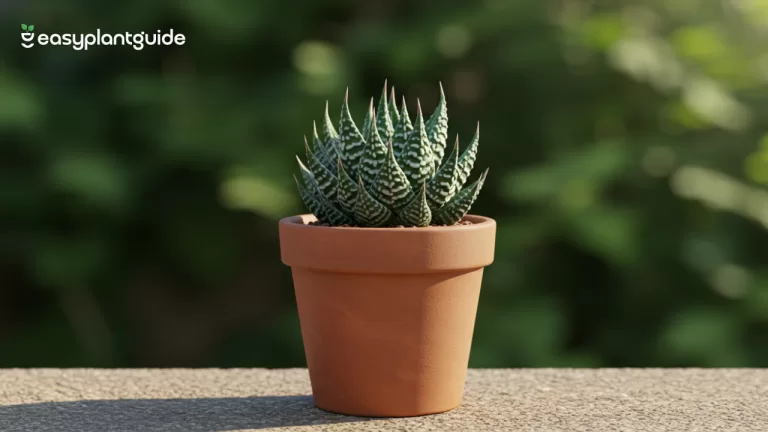Creeping Rosemary: 7 Amazing Reasons to Grow It
The Creeping Rosemary plant, scientifically known as Rosmarinus officinalis prostratus, is a low-growing, aromatic herb that instantly transforms ordinary spaces into Mediterranean masterpieces. With its cascading green foliage, delicate blue flowers, and enchanting fragrance, this hardy plant offers much more than visual appeal. Whether you’re after a resilient ground cover, a fragrant herb garden, or a natural erosion controller, Creeping Rosemary brings charm, utility, and timeless beauty to any outdoor setting. Let’s dive into the wonderful world of this versatile plant and uncover why it’s a must-have for every garden lover.

Botanical Information of Creeping Rosemary
| Feature | Description |
| Botanical Name | Rosmarinus officinalis var. prostratus |
| Common Name | Creeping Rosemary, Trailing Rosemary |
| Family | Lamiaceae (Mint family) |
| Plant Type | Evergreen perennial herb |
| Origin | Mediterranean region |
| Growth Habit | Low, spreading, and trailing |
| Lifespan | Long-lived perennial |
The Natural Charm of Creeping Rosemary
Creeping Rosemary isn’t just another herb; it’s a landscape designer’s dream. Its lush, needle-like foliage spreads gracefully, creating a living carpet of green that releases a soothing fragrance whenever brushed. This variety of rosemary hugs the ground, unlike its upright cousin, making it perfect for draping over rock walls, edging pathways, or filling bare garden spots.
Why Gardeners Adore Creeping Rosemary
There are countless reasons to fall in love with the Creeping Rosemary plant, making it a true favorite among gardeners. Once established, it’s incredibly hardy and drought-tolerant, thriving even in tough conditions. Its aromatic leaves act as a natural air freshener, filling the garden with a refreshing scent. The plant also helps control erosion on slopes with its dense, trailing growth. Plus, it attracts pollinators like bees and butterflies while remaining low-maintenance and beautifully lush throughout the year.
Origin and Habitat
Native to the sun-drenched shores of the Mediterranean, Creeping Rosemary naturally thrives in dry, rocky soils and areas exposed to full sunlight. It has adapted to coastal environments where sea breezes and limited rainfall are common, giving it remarkable resilience. This hardy background makes it a perfect choice for gardens that mimic warm, well-drained, and semi-arid conditions. When planted in similar settings at home, Creeping Rosemary grows vigorously, releasing its refreshing scent into the air and adding a touch of Mediterranean charm.
Creeping Rosemary Appearance
The Creeping Rosemary plant is a true visual delight, with its slender, needle-like leaves that are dark green on top and silvery beneath, creating a soft shimmer under sunlight. Its graceful, trailing stems form dense mats of foliage that spill beautifully over walls or garden edges. In spring and early summer, it bursts into bloom with clusters of delicate bluish-lavender flowers, adding color and attracting beneficial pollinators like bees and butterflies to your garden.
How to Grow Creeping Rosemary
Growing Creeping Rosemary is easier than you might think. Whether in pots, hanging baskets, or garden beds, it thrives with minimal care. Here’s a simple guide to get started:
- Choose a sunny spot with well-draining soil.
- Plant during spring or early summer for best results.
- Space plants 2–3 feet apart to allow proper spreading.
- Water moderately until established, then reduce frequency.
- Prune lightly to maintain shape and encourage new growth.
Ideal Growing Conditions
The Creeping Rosemary plant flourishes in warm, sunny environments and performs best in USDA zones 8 to 10. It thrives with at least six hours of direct sunlight daily, making it perfect for open gardens or sunny patios. This hardy herb tolerates poor, rocky soil as long as it’s well-drained. In regions with harsh winters, it can be grown in containers and moved indoors during cold months, ensuring it stays healthy and green all year long.
Watering and Soil Needs
Creeping Rosemary prefers a slightly dry environment and dislikes excessive moisture. Overwatering can lead to root rot, so it’s best to let the top inch of soil dry before watering again. Sandy or loamy soil with good drainage provides the perfect foundation for growth. Adding a bit of coarse sand or gravel helps prevent waterlogging, keeping the roots healthy and allowing the plant to thrive even in drought-prone conditions.
Sunlight and Temperature Requirements
This plant adores sunshine and performs best in bright, direct light for most of the day. Creeping Rosemary can withstand mild frost but is sensitive to prolonged cold and freezing temperatures. Ideal growth occurs in warm climates with steady airflow and low humidity. For gardeners in cooler areas, it’s best to grow it in containers that can be brought indoors during winter, ensuring the plant continues to thrive in warmth and light year-round.
Pruning and Maintenance Tips
Regular pruning helps maintain its shape and promotes thicker growth. Snip off dead or woody stems and trim back long runners to keep it neat. Try these 5 easy pruning habits:
- Trim after flowering to control spread.
- Remove any dead or yellowing leaves.
- Shape trailing stems for a tidy appearance.
- Use clean, sharp shears to avoid damage.
- Never prune more than one-third of the plant at once.
Propagation Methods
Creeping Rosemary can be easily propagated through stem cuttings, seeds, or layering. The most common method is stem cuttings since it’s fast and reliable. Follow these steps for successful propagation:
- Take 4–6 inch cuttings from healthy plants.
- Remove lower leaves and dip the stem in rooting hormone.
- Plant in moist, well-draining soil.
- Keep in indirect light until roots form.
- Transplant once strong growth appears.

Uses and Benefits of Creeping Rosemary
The Creeping Rosemary plant offers far more than just ornamental beauty—it’s a true multitasker in both garden and home. Its aromatic leaves and essential oils make it a valuable culinary herb, perfect for seasoning meats, breads, and infused oils. Beyond the kitchen, it’s used in aromatherapy to promote relaxation and mental clarity. In gardens, it naturally repels insects and helps reduce soil erosion on slopes with its spreading roots. Plus, its lush greenery and soothing fragrance add timeless visual and aromatic appeal to any landscape.
Common Problems and Solutions
| Problem | Cause | Solution |
| Root Rot | Overwatering or poor drainage | Water moderately and ensure the soil drains well. |
| Powdery Mildew | Lack of airflow or excess humidity | Improve air circulation and provide more sunlight. |
| Aphids & Spider Mites | Pest infestation on leaves and stems | Treat with neem oil or insecticidal soap regularly. |
| Yellow Leaves | Waterlogged or compacted soil | Check drainage and reduce watering frequency. |
| Leggy Growth | Lack of pruning or insufficient sunlight | Prune often to promote bushier, compact growth. |
Companion Plants for Creeping Rosemary
Pair Creeping Rosemary with other sun-loving, drought-tolerant plants for a stunning and cohesive garden design. Excellent companion choices include lavender, thyme, sage, oregano, and sedum—all of which thrive in similar warm, dry conditions. Together, these plants create a visually appealing landscape filled with texture, fragrance, and color. Beyond their beauty, they attract pollinators like bees and butterflies, transforming your garden into a vibrant, aromatic, and eco-friendly haven that flourishes effortlessly under the sun.
Landscape and Design Ideas
Creeping Rosemary is incredibly versatile and can fit into various landscaping styles. Use it as a cascading accent over retaining walls, as ground cover along pathways, or in hanging planters for a flowing effect. Design inspiration:
- Perfect for rock gardens and Mediterranean themes
- Great border plant for sunny walkways
- Ideal for slopes and erosion control
- Adds greenery to vertical gardens and walls
- Complements stone and terracotta settings beautifully
Fun Facts About Creeping Rosemary
Did you know Creeping Rosemary has some surprising qualities?
- It was once believed to boost memory and clarity.
- The name Rosmarinus means “dew of the sea.
- It’s been used in weddings for centuries as a love symbol.
- The flowers are edible and can garnish salads.
- Ancient Greeks used rosemary to improve focus during study sessions.
Conclusion
The Creeping Rosemary plant is truly a gift to both the eyes and the senses, effortlessly blending beauty, fragrance, and functionality. Its graceful trailing habit creates a cascading green carpet that softens garden edges, spills elegantly over walls, and fills the air with a refreshing herbal scent. This evergreen wonder brings life to any season, staying lush and vibrant even when other plants fade.
Whether you’re using it as a hardy ground cover, a flavorful kitchen herb, or a natural stabilizer for slopes and rocky areas, Creeping Rosemary adapts with ease. Its resilience in harsh sunlight and minimal watering needs make it perfect for busy gardeners seeking low-maintenance elegance. From Mediterranean-inspired landscapes to cozy backyard corners, this versatile herb turns every space into a serene, aromatic retreat—a true plant that keeps on giving, year after year.
Explore more plant blogs and grow your green journey with us.







